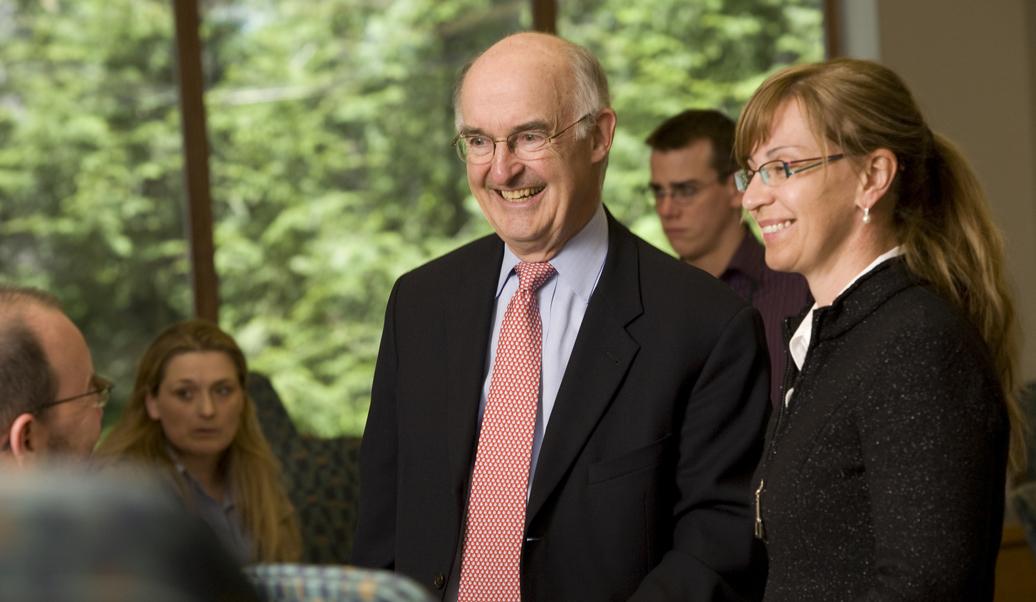Strategic Financial Leadership Program
In response to new research that shows a gap in financial leaders’ skills set, Tuck Executive Education created the Strategic Financial Leadership Program (SFLP).
In response to new research that shows a gap in financial leaders’ skills set, Tuck Executive Education created the Strategic Financial Leadership Program (SFLP). Professor Bob Howell designed SFLP to help senior finance executives become stronger strategic partners to the CEO by providing the tools to link strategy, leadership, communication, and financial decision making to long-term value creation.
"We launched SFLP based on many in-depth conversations with CFOs and senior finance executives", says Director of Tuck's Open Enrollment Programs, Dick Mosenthal. "They told us that many of their high-potential staff are not as strong in terms of their strategic perspective, communication abilities, and leadership/influence skills, as they are with their finance acumen. There is a clear gap in skills, and SFLP was created to fill those gaps."

Created and led by Faculty Director, Profesorr Robert Howell, SFLP is designed specifically for senior financial executives, their direct reports, and high-potential financial staff. Howell taught the finance portion of SFLP, joined by three of Tuck's preeminent faculty in strategy, communications, and leadership: Sydney Finkelstein, Paul Argenti, and Pino Audia, respectively.
SFLP participants overwhelmingly agreed that the SFLP experience had a positive impact on the way they approach and execute strategy, as well as their personal leadership awareness. The Managing Director of a global biomedical company who sent a team to the program said, "I have looked exhaustively for a program that combines strategic mindset, communication, and leadership for my finance team. SFLP is a great catalyst for the changes we need to implement."
When asked about the underlying drivers for success in this program, Professor Howell explains, "It's about having an open mind and being fully engaged and committed to the process. When participants are open to new ideas, that's when transformation happens. This group showed real commitment and so they reap the rewards of that effort."
For many participants, broadening their leadership and communication skills was a key objective that was met during the program. "The leadership and influence sessions were absolute eye-openers for me. I will put this to good use," said the CFO of a publicly-traded mining company.
Perfect Marks for Faculty Accessibility—A Tuck Hallmark
The program evaluations supported the assertion that key objectives were met. On a five-point scale, SFLP received a rating of 4.8 overall. Faculty accessibility inside the classroom and out—a key Tuck attribute—earned a perfect score of 5.0. The Senior Vice President and Corporate Controller at Corning, Inc. said, "TheTuck faculty were outstanding. They devoted time outside the class to help us apply concepts back on the job."
Making the concepts relevant to a specific situation or challenge is where Tuck faculty add substantial value for participants and their organizations. In addition to the study groups and classroom sessions, SFLP provides the opportunity for participants to work on an "action-learning project" of strategic relevance to their companies. These hands-on projects focus on real challenges that are at the intersection of strategy and finance.
To shape their projects, participants spent one-on-one time with Howell outside class time. On the final Friday, during an action planning session to discuss reentry back to work, participants presented their project to the entire class. They received feedback and garnered insights from their peer learners and faculty.
Action learning unleashes creative thinking, creates an ROI on learning by providing a real-time context for the connection between concept and action, and delivers a payoff to help improve business performance back on the job. "The idea of putting theory into practice as quickly as possible cements the theory," says Howell. "If it has significant value," he adds, "a participant can pay for the price of the program and then some." That's good for a company's overall strategy—and for its bottom line.